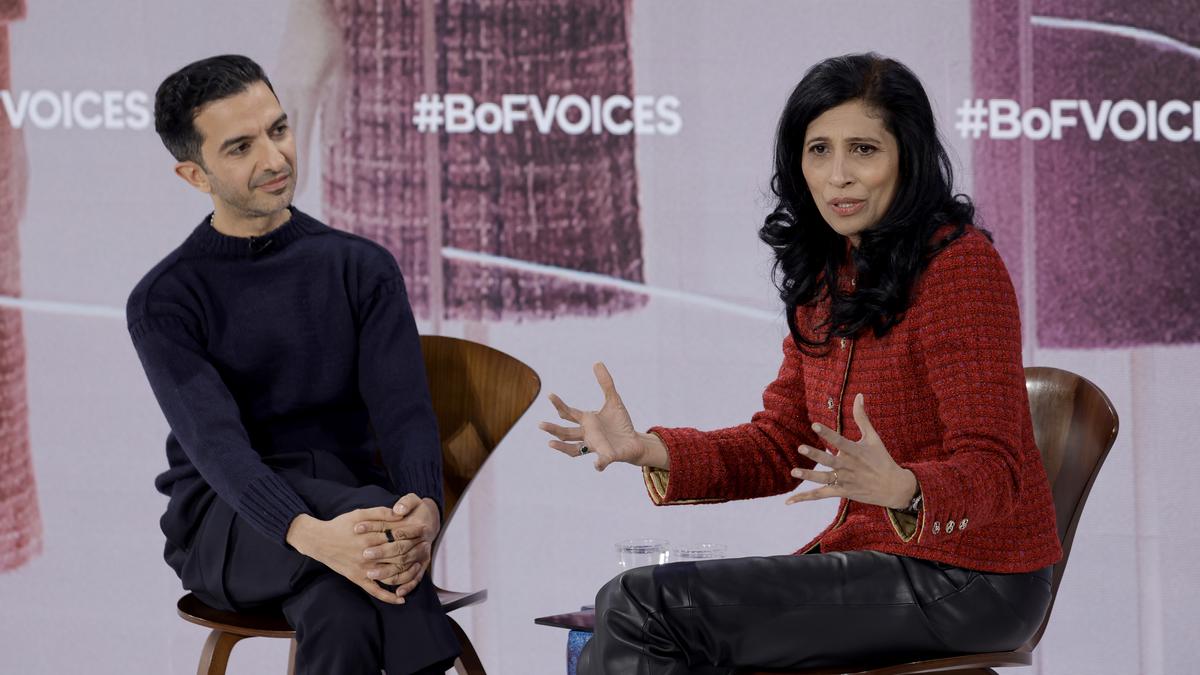
Leena Nair: focused on bringing Chanel into the 21st century
The Hindu
As the first Indian and first non-white CEO of Chanel, Leena Nair is banking on her 30 years of HR experience to further the fashion houses influence and philanthropic work
On a crisp November day in Oxfordshire, Leena Nair, the statuesque 54-year-old CEO of the uber luxury fashion brand Chanel, sat inconspicuously in the second row of BoF Voices, a prestigious annual conference organised by Business of Fashion, the fashion focused digital media company. Wearing a gold buttoned red Chanel jacket, with leather pants and short black boots, Nair was speaking at the conference, her first such public engagement after assuming the top job at Chanel, the French luxury fashion house, in January 2022. A 30-year veteran of Unilever, the Kolhapur, Maharashtra, native has been keeping a low profile since her appointment, a milestone moment not just for her, but for the fashion industry as well.
Indian-origin CEOs have broken glass ceilings in tech, finance, and consumer goods, but the global luxury fashion sector is stubbornly white and male. Nair is the first Indian, first non-white and only the second woman to assume the CEO role in Chanel’s 114-year-history. It is now the only major fashion company with both a female CEO and a female creative director (Virginie Viard).
“Gobsmacked,” is how Nair described her initial reaction when she got the call from Chanel. “I hadn’t seen it coming,” she told Imran Amed, BoF’s founder, who interviewed her at the conference. “To be honest, I was in tears because I loved Unilever so much. I was like, ‘No, I’m not going to leave Unilever.’ And, you know, my husband said, ‘Honey, you’re not getting a divorce. You’re just leaving and joining another company.’”
Chanel, which is owned by the Wertheimer family, is one of the last privately held luxury fashion companies, with annual revenues of more than $17 billion, from the sale of clothing, leather goods, beauty, skincare, perfumes and cosmetics, jewellery, watches and eyewear, sold across its 310 boutiques (the brand’s iconic Maxi 2.55 handbag, for instance, retails for $11,500 while a classic tweed jacket starts at $6,000). Its charitable outlay is about $100 million annually. In a freewheeling and candid chat with Amed, Nair said she decided to take the plunge to join Chanel because of fashion’s enormous impact and influence, and because of its philanthropic work with women and girls globally. She received 7,000 emails and letters from women around the world when her Chanel job was announced.
Nair has spent the past year and a half on touring and visiting 100 Chanel retail outlets, factories and offices, from Panama to Pacific Palisades (in Los Angeles), interacting with people on the shop floor, taking senior executives to meet innovators at Google and Disney, and pushing Fondation Chanel, the company’s charitable arm. She has spoken of supportive mentors like Indra Nooyi and Nigel Higgins of Barclays; her deep experience in HR has made her hone in on the importance of human capital.
She has taken a cautious approach to the press, giving very few interviews. Instead, she has focused on how to bring Chanel, which has a reputation for being conservative and somewhat stodgy — it doesn’t have an e-commerce presence except in beauty — into the 21st century. Nair’s aim, she said at Voices, is to concentrate on innovation, by investing in 30 startups tied to academic institutions, and in pushing sustainability and philanthropy.
These days Nair finds herself hobnobbing with King Charles and Queen Camilla, French President Emmanuel Macron and Prime Minister Narendra Modi, a world away from the industry in which she cut her teeth: mass, fast moving consumer goods. Not one to shy away from a challenge — she describes herself as having accomplished many ‘firsts’; she was educated in Kolhapur’s first school for girls and hers was the first batch to graduate. She was constantly told ‘girls can’t do this”, she said at Voices. “After a point, I had to stop listening. I remember my mother saying, ‘Oh, my God, you’re so ambitious. Who’s going to marry you?’ This is such a problem. And, you know, the sort of comments I would get is ‘You’re so talented, you should have been a boy.’”

Thomas Jefferson and Abraham Lincoln are two of the greatest presidents that the U.S. has seen. You probably know that already. But did you know that Jefferson made what is considered the first contribution to American vertebrate paleontology? Or that Lincoln is the only U.S. president to receive a patent? What’s more, both their contributions have March 10 in common… 52 years apart. A.S.Ganesh hands you the details…












